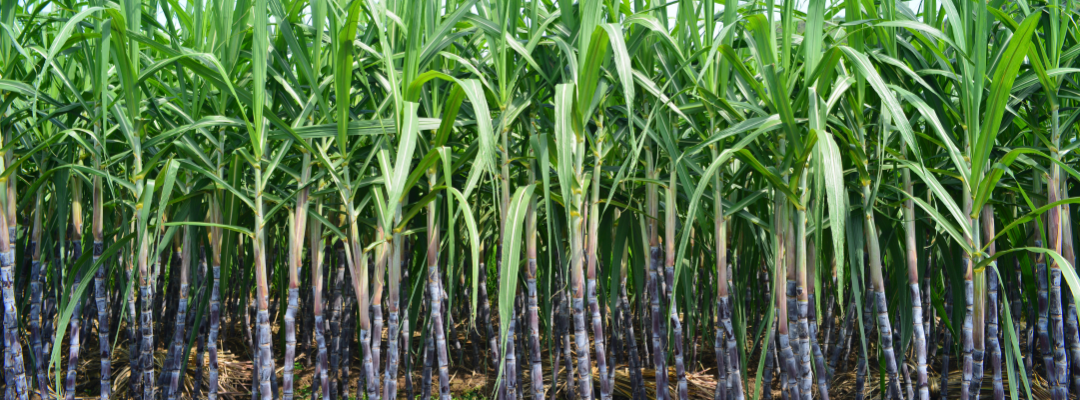In the lead up to the 2018 Farm Bill expiration, U.S. Representatives Blumenauer (D-OR) and Kuster (D-NH) requested that the U.S. Government Accountability Office (GAO) study the effects of the U.S. sugar program. In this latest GAO report, rather than providing an objective and comprehensive overview of the effects of the program, it seems GAO was most interested in doubling down on its previous work. Importantly, despite decades of criticism from GAO, both Congress and the USDA have repeatedly rejected calls for wholesale changes to the U.S. sugar program. Sugar is the most highly supported agricultural good worldwide and the global sugar market is the most distorted commodity market, a point acknowledged by GAO. That factor and others, which we outline below, help explain why Congress has, with only a few brief exceptions, maintained a strong sugar program since 1789 regardless of which party has been in power. Had GAO considered some of those points, it would have resulted in a considerably more objective and well-balanced report.
GAO devoted a considerable amount of its report to examining the extent to which food companies are harmed by the sugar program. While it is not surprising the GAO report repeats the complaints of sugar-using groups regarding prices paid for sugar, it is surprising that GAO would not note (much less attempt to quantify) any benefits that those users receive from the sugar program. For one, research has shown that U.S. consumers prefer domestically sourced sugar rather than foreign sugar (Lewis et al., 2016). The U.S. sugar program establishes and maintains a strong domestic sugar supply chain, which accrues benefits to sugar-using companies and consumers, as well as promotes a reliable domestic supply of beet and cane sugar. Because of the U.S. sugar program, sugar-users can count on a reliable supply of sugar whenever and wherever they desire it and in the form that meets their specific needs. Such just-in-time delivery of an essential input to their production lines without having to invest in costly sugar storage facilities is extremely valuable to those companies. GAO does not provide any comparison to alternative scenarios in which those companies have to pay to invest in their own sugar supply chain logistics and where those companies are reliant on their main sugar supply being shipped to them from countries such as Brazil or India.
The GAO report also neglected to include several recent articles that indicate the success of sugar-using firms that operate within the contours of the U.S. sugar program (i.e., Trejo-Pech et al., 2020; DeLong and Trejo-Pech, 2022; Trejo-Pech et al., 2023). For example, Trejo-Pech et al. (2023) demonstrates that food companies that are large sugar purchasers financially outperform other agribusinesses as well as other publicly traded companies in the United States.
The GAO report briefly discussed how the effects of the U.S. sugar program are passed from food manufacturers to end-consumers. However, they referenced a GAO report from 2000 rather than using more recent studies. For example, DeLong and Trejo-Pech (2022) found that sugar-using companies in the United States do not pass on savings from changes in sugar prices to consumers, raising questions about GAO’s statements regarding which groups bear the costs of the sugar program. History unequivocally shows that food manufacturers and retailers pass no savings along to consumers when the price they pay producers for their sugar drops. DeLong and Trejo-Pech (2022) found no correlation between the price of sugar in the United States and the retail product prices charged to American households by sugar-using companies. In other words, any benefit in a decrease in U.S. sugar prices is likely captured by food manufacturers as increased profits and are not passed along to their customers (DeLong and Trejo-Pech (2022)).
While GAO did not repeat its earlier recommendation from twenty years ago for Congress to lower the loan rate for sugar, it has missed an opportunity to compare the sugar loan levels in the farm bill – which have remained virtually unchanged over the past several farm bills – to the actual costs of producing sugar. Had GAO done so, the report would have added to the current farm bill discussion by showing how much costs of production have increased relative to the loan rates established in the 2018 Farm Bill. While that topic will be addressed more thoroughly in a subsequent Southern Ag Todayarticle, current costs of sugarbeet and sugarcane production are roughly 30% higher than they were in 2018 when the last farm bill was enacted.
GAO spent most of their report simply summarizing results from selected welfare economic studies (similar to their previous reports) that ultimately provides only a one-sided view of the sugar market in the United States and other countries. Indeed, many of their selected studies do not include more recent developments in the U.S. sugar market, such as the current Suspension Agreements with Mexico for sugar trade. Moreover, welfare economic studies do not capture the real-world benefits of ensuring a strong domestic supply chain, and they will continue to inadequately quantify the threat posed to U.S. producers by foreign governments in response to changes in U.S. sugar policy. For example, in just the past decade, there have been disputes involving the aforementioned dumping of subsidized sugar from Mexico into the United States and a WTO violation in the case of Indian subsidies to its sugar industry (USDA Economic Research Service, 2023; USDA Foreign Agricultural Service, 2023).
Notably absent from GAO’s report are the many studies that document the importance of the economic activity generated by sugar production to many rural and urban communities around the United States. For example, a recent study by researchers at Texas A&M University found that the sugar industry contributes an estimated $23.3 billion annually to the U.S. economy, supporting more than 150,000 jobs across two dozen states.
What is perhaps most interesting in the GAO report is their recommendation to USDA and the U.S. Trade Representative (USTR) to analyze alternative mechanisms for administering preferential-quota access to our trade partners. Improving the efficiency of government administration is always laudable. With that said, that is virtually the same recommendation GAO made nearly 25 years ago. After decades of observing how this has worked in practice, actually analyzing the potential gains from changing how USDA and the USTR administer sugar quotas would have been an interesting contribution by GAO to the discourse surrounding the new farm bill. GAO’s report did not add anything new to the discussion of the U.S. sugar program, and it missed an opportunity to finally provide a balanced report which includes the benefits provided by the U.S. sugar program.
References:
DeLong, K.L. and C. Trejo-Pech. 2022. “Factors Affecting Sugar-Containing-Product Prices.” Journal of Agricultural and Applied Economics, 54(2): 334-356. https://doi.org/10.1017/aae.2022.12
Lewis, K.E., C. Grebitus, and R. Nayga, Jr. 2016. “U.S. Consumer Preferences for Imported and Genetically Modified Sugar: Examining Policy Consequentiality in a Choice Experiment.” Journal of Behavioral and Experimental Economics, 65:1-8. https://doi.org/10.1016/j.socec.2016.10.001
Trejo-Pech, C.J.O., K.L. DeLong, D.M. Lambert, and V. Siokos. 2020. “The Impact of US Sugar Prices on the Financial Performance of US Sugar-Using Firms.” Agricultural and Food Economics, 8(6): 1-17. https://doi.org/10.1186/s40100-020-00161-5
Trejo-Pech, C.J.O., K.L. DeLong, and R. Johansson. 2023. “How Does the Financial Performance of Sugar-Using Firms Compare to other Agribusinesses? An Accounting and Economic Profit Rates Analysis.” Agricultural Finance Review, 83(3): 453:477. https://doi.org/10.1108/AFR-08-2022-0103
USDA Economic Research Service. 2023. Mexico Remains Significant Supplier of U.S. Sugar Despite Limits Imposed on Mexican Sugar Imports. Retrieved from: https://www.ers.usda.gov/data-products/chart-gallery/gallery/chart-detail/?chartId=103093#:~:text=In%202014%2C%20after%20the%20U.S.,been%20applied%20to%20Mexican%20sugar. USDA Foreign Agricultural Service. 2023. India: WTP Rules Against India’s Sugar Export Subsidies and Domestic Price Support. Retrieved from: https://fas.usda.gov/data/india-wto-rules-against-indias-sugar-export-subsidies-and-domestic-price-support#:~:text=On%20December%2014%2C%202021%2C%20the,obligations%20under%20the%20multilateral%20agreement
DeLong, Karen L., Michael Deliberto, and Bart L. Fischer. “Evaluation of the Recent Government Accountability Office Sugar Program Report.” Southern Ag Today 3(48.4). November 30, 2023. Permalink












